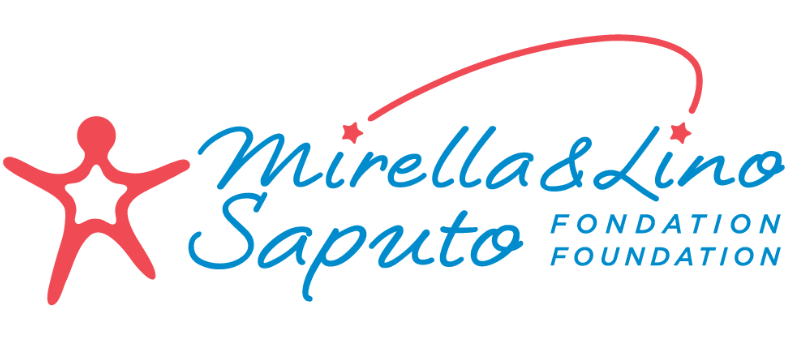In collaboration with Plan humain, August 2024.
Summary
2024 has been a big year for the Québec association for equity and inclusion in post-secondary education (AQEIPS). Not only did we celebrate 25 years of our bursary program, but we also received record-breaking donations from our generous donors and were able to award 35 bursaries to students with disabilities (SWD) from across the province of Québec. As a bonus to our success this year, we were able to work in collaboration with the consulting company Plan Humain to conduct a survey of our bursary winners over the years in order to evaluate the impact that our program on recipients. Here are some highlights from the report:

1. CONTEXT
Age
The majority of scholarship recipients are between 18-25 years old, which shows that the organization’s mission is well targeted. As AQEIPS aims to support students in vocational, cegep and university studies, these bursary holders represent the age group where people begin or continue their studies. This is therefore the age group to prioritize if we want to improve our mission. Naturally, all bursary recipients, regardless of age, will be considered, but the focus should be on the 18–25-year-olds.
Territory
Although the organization has its head office and employees in Montreal, it is clear that the efforts made to ensure a regional presence are generating results. More than five major regions of Quebec are represented in the survey, which confirms that our notoriety is sufficient to make us stand out throughout Quebec.
2. COMMITMENT
Referencing
Once again, the bursary holders unanimously wish to share their bursary experience with the organization. Some would even like to be able to benefit from a bursary again. It might be interesting to consider the possibility of awarding bursaries twice, for example at the beginning and at the end of a program of study.
Half of the recipients would like to be part of a network of former recipients and benefit from networking and opportunities to share their experience. This type of networking would not only create connections but could also transform all recipients into ambassadors for the organization, who could in turn promote the organization through word of mouth in their networks.
What the organization is currently lacking in its communications is storytelling. Donors, partners, and even bursary recipients must be able to understand the magnitude of the impact this bursary has on people’s lives. By sharing more stories, journeys and successes, the organization will get closer and closer to its target clientele and succeed in attracting them.
Understanding of the organization
The majority of bursary recipients understand the mission of the organization and the support it can provide. We can therefore assume that the communication tools used transmit a simple, clear and well-received message in the various educational institutions.
In terms of its strengths, the bursary program is definitely at the heart of the organization for these SWD. Beyond the financial aspect, the recognition associated with the award of this bursary is one of the strong points of the initiative. Students truly feel the support of a partner committed to helping them pursue their studies. Their positive perception towards the organization, due to the warmth of its interventions and its support, is also undeniable.
Regarding the points for improvement, the bursary holders agree that it would be beneficial to strengthen promotion among educational institutions, not only to raise awareness, but also to ensure that as many potential winners as possible have access to bursaries. There is still work to be done to raise awareness among CEGEPs and universities of the realities of SWD.
Communication
The bursary recipients were informed of the bursary program mainly through school networks. Friends and social networks also helped promote the program, but not as much as direct communication with educational establishments. Developing even closer and more proactive communication links with these institutions will make it possible to continue targeting the right candidates for bursaries and encourage the educational journey of a greater number of students in the future.
Although the organization’s communications are appreciated and considered sufficient by the recipients, they would like to receive more information about the stories of other recipients (for example, what happens to them after their studies and after winning the bursary). Sharing more stories could create a feeling of belonging among the bursary winners and strengthen word of mouth as a key element of the bursary program’s notoriety among the target clientele.
3. IMPACT
Amount and process
The majority of recipients received bursaries of $1,000, and the responses are therefore related to this amount. Everyone agreed that it was a very significant amount, although some expressed the wish to receive it more than once. This amount seemed perfectly suited to the needs of the bursary winners.
However, the process of obtaining this bursary was not unanimous in terms of simplicity. The majority seemed to have encountered difficulties in obtaining the bursary. It will therefore be necessary to rethink the application process in order to simplify it.
The majority of bursary recipients also benefited from support from other bursaries, mainly from the Desjardins Foundation. As our two organizations support similar profiles in terms of their mission, it could be relevant to increase our visibility with Desjardins. This would allow us, on both sides, to direct our respective recipients to maximize the financial support offered by our two organizations.
Personal and professional impact
All the recipients are unanimous about the positive impact that this bursary has had on their educational pursuits. First, it has given them enormous self-confidence, offering them hope that their dreams of success can come true. Thanks to this bursary, they were able to fully concentrate on their studies without having to endure financial stress, which is even more important given that studying is already a challenge in itself. The bursary made their school experience more positive and “easy,” reassuring them of their ability to succeed. They felt like they had a partner who believed in them and supported them in their journey. The bursary helped pay for tuition and school materials, and in many cases, avoid debt. Thanks to this assistance, the bursary holders were able to reduce their working hours and thus maximize their investment in their studies.
4. CONCLUSION
It is undeniable that the awarding of bursaries is at the heart of AQEIPS’ mission, that it has a significant impact on its recipients, and must therefore be maintained. These bursaries offer valuable support to SWD and allow them to concentrate all their energy on their educational endeavors. However, certain aspects of the bursary program will need to be revised to maximize its impact and participation: communication with school networks, the ability to receive the bursary more than once, and above all, finding a way to maintain commitment with bursary winners so that they in turn may become ambassadors.
This evaluation report was financed by the Mirella & Lino Saputo foundation.

